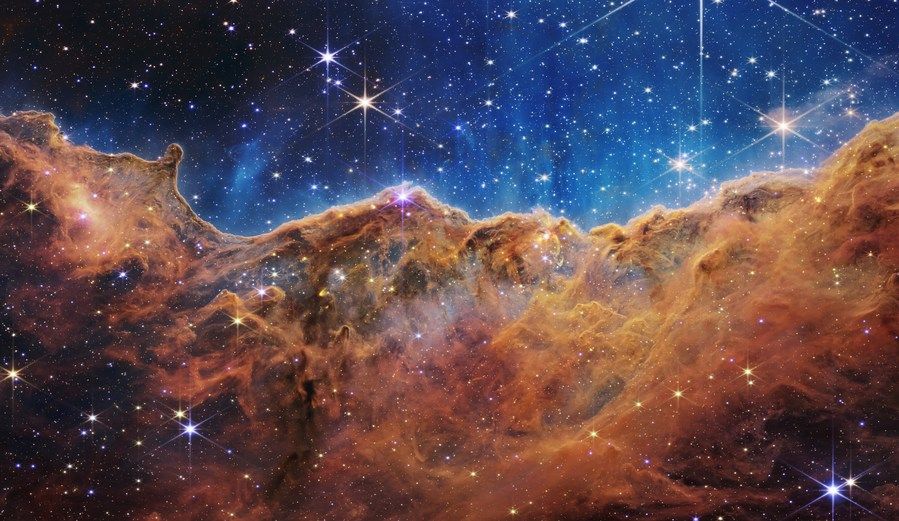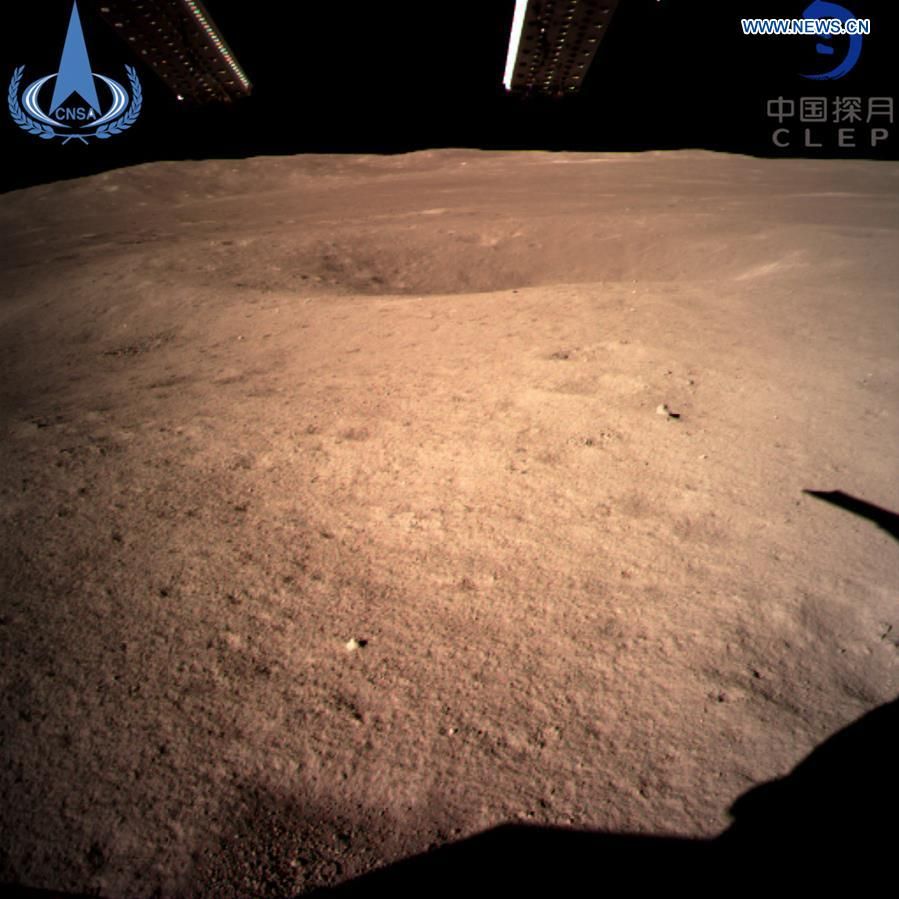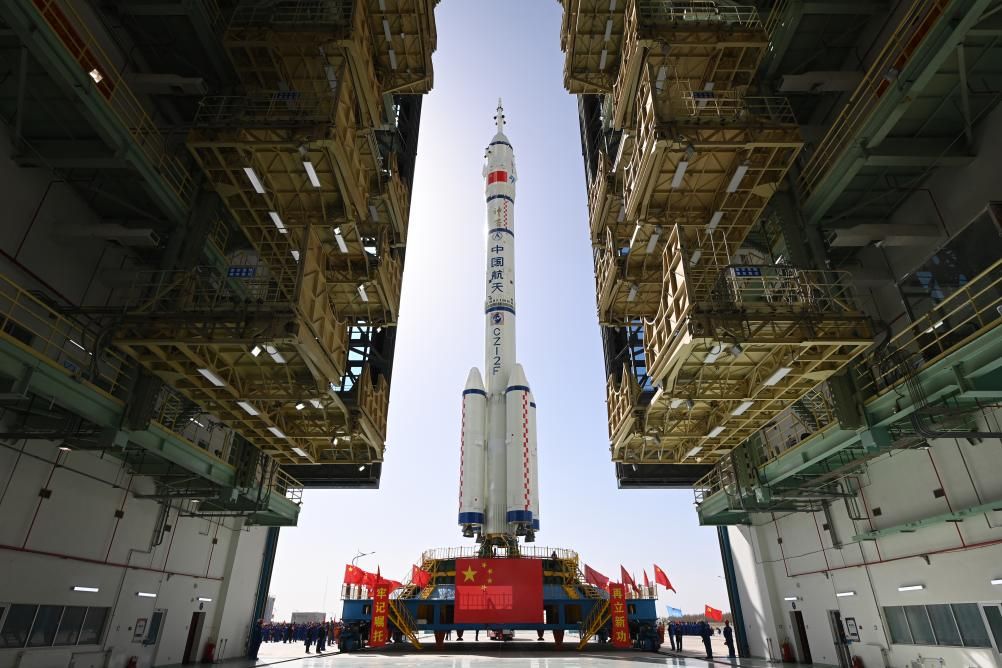


Image released by NASA on July 12, 2022 shows the edge of a nearby, young, star-forming region called NGC 3324 in the Carina Nebula. Captured in infrared light by NASA's James Webb Space Telescope, the image reveals for the first time previously invisible areas of star birth. (NASA, ESA, CSA, STScI/Handout via Xinhua)
Editor's note: Why do people venture into the cosmos? In 1970, Dr. Ernst Stuhlinger, then-associate director of science at NASA's Marshall Space Flight Center, wrote in a reply to a Zambia-based nun, "Very fortunately though, the space age not only holds out a mirror in which we can see ourselves, it also provides us with the technologies, the challenge, the motivation, and even with the optimism to attack these tasks with confidence." To date, across various industries, the exploration of the universe continues to allure with its diverse wonders and merits. Yet, what endures is humanity's resolute spirit and ingenuity to surmount obstacles and press forward.
April 24, 2024, marks the 9th Space Day of China. On this day, 54 years ago, China achieved a significant milestone by successfully launching its first artificial satellite, “Dongfanghong-1”, heralding its odyssey into space. Through the tireless endeavors of generations of astronautical professionals and technicians, China's space industry has continually pushed boundaries, rendering space more accessible.
As outlined by the China National Space Administration, this year will witness the following key space missions:
Lunar Far Side Sampling

Photo provided by the China National Space Administration on Jan. 3, 2019 shows the first image of the moon's far side taken by China's Chang'e-4 probe. (Xinhua)
In 2024, China plans about 100 space launches, which will set the country's new record. The 4th phase of the lunar exploration program, the Chang'e-6 mission, is slated to collect samples within the South Pole-Aitken Basin on the far side of the moon.
To date, all 10 lunar sampling missions conducted by humans have targeted the near side of the moon. The far side, comparatively older and much different from the earth-facing side, harbors significant scientific research potential. The designated landing zone for the Chang'e-6 mission, situated within the South Pole-Aitken Basin, aims to unearth and gather lunar samples from diverse regions and epochs, augmenting humanity's comprehension of the moon. Following the successful return of samples, scientists will embark on systematic and enduring laboratory investigations to advance the understanding of lunar genesis and evolutionary trajectories.
Crewed Space Missions

This photo taken on April 17, 2024 shows the combination of the Shenzhou-18 crewed spaceship and a Long March-2F carrier rocket being transferred to the launching area of the Jiuquan Satellite Launch Center in northwest China. (Photo by Wang Jiangbo/Xinhua)
This year will witness the execution of Shenzhou-18 and Shenzhou-19 manned space flight missions. Lin Xiqiang, deputy director of the China Manned Space Agency, announced that the Shenzhou-18 crewed spaceship will be launched at 8:59 p.m. Thursday (Beijing Time) from the Jiuquan Satellite Launch Center in northwest China. This mission represents the third manned flight in the application and development phase of the space station and the 32nd flight mission within the realm of manned space missions.
Commercial Space Industry
Space is embracing business.

A Smart Dragon-3 rocket carrying 14 satellites blasts off at the Yellow Sea Dec. 9, 2022. The commercial rocket blasted off at 2:35 p.m. (Beijing Time). (Photo by Guo Houze/Xinhua)
The inclusion of the commercial space industry in this year’s government work report has underscored concerted efforts toward fostering novel growth avenues. The commercial space industry, characterized by its intricate technological demands, inherent risks, heightened efficiency, and protracted development cycles, stands as a new frontier driving innovation. Commercial satellites, a pivotal facet of commercial spaceflight applications, find their niche across communication, remote sensing, navigation, and various other domains. The burgeoning commercial space market in China holds immense potential, and is poised to become a trillion-dollar business.
International Space Cooperation

This photo shows the first China-Latin American and Caribbean States Space Cooperation Forum in Wuhan, central China's Hubei Province, April 24, 2024. The forum kicked off here on Wednesday. (Xinhua/Xiao Yijiu)
China has been actively involved in the global space community, offering services to users worldwide, fostering collaboration, and sharing Chinese expertise. According to the CNSA at a press conference commemorating the 2024 Space Day of China, China is willing to deepen its cooperation and exchanges with other nations to advance space exploration and the peaceful use of outer space and to make better use of space technologies for the interests of all people around the world.
点击右上角![]() 微信好友
微信好友
 朋友圈
朋友圈

请使用浏览器分享功能进行分享
